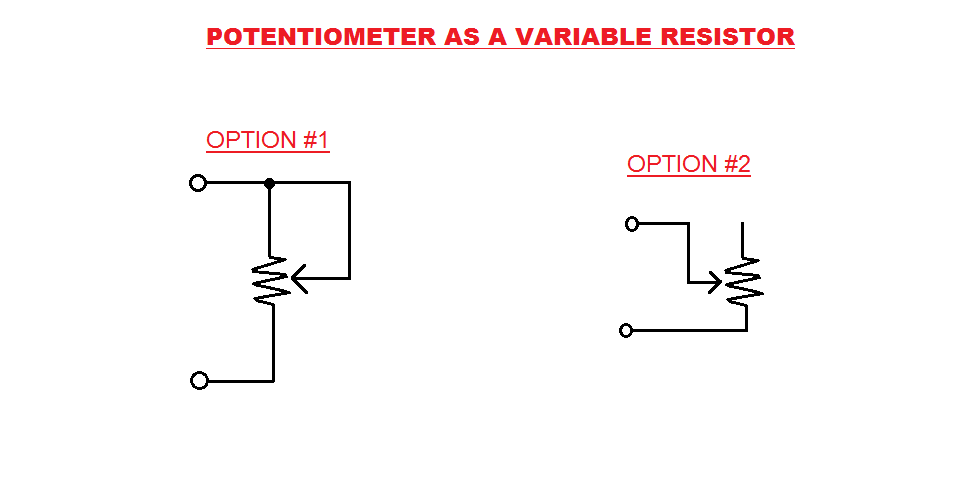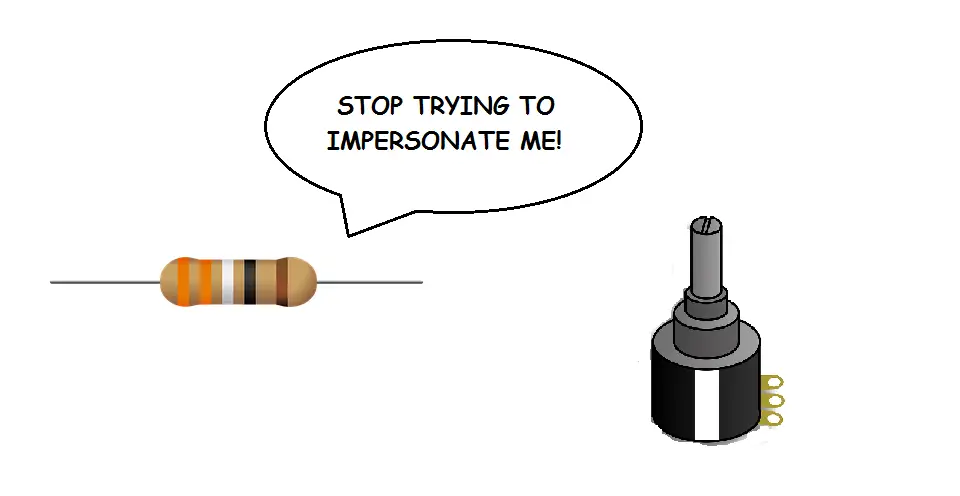Being able to limit the flow of current is essential in every electrical and electronic circuit. To be able to limit current you need to provide resistance. The greater the resistance, the less current can flow and vice versa. A fixed resistor is a component whose sole purpose is to do exactly that; provide a known fixed value of resistance to limit current flow. Then we have a component known as a Potentiometer. This component has the ability to vary voltage as well resistance.
So, can a potentiometer be used as a fixed resistor? Yes, a potentiometer can be used as a fixed resistor. To do this you will need to set the potentiometer as a variable resistor and then set the desired value of resistance. Potentiometers come in a range of resistances, which you will need to choose accordingly.
But, is using a potentiometer as a fixed resistor the more important question. This shall be discussed in detail in this article.
What is the difference between a resistor and potentiometer
The main difference between a fixed resistor and a potentiometer is resistance. A fixed resistor is aptly named that because it has a ‘fixed’ value of resistance. Its resistance value cannot be altered. On the other hand a potentiometer is a component that can vary its resistance (when set up as a variable resistor) between a minimum value (usually 0), and a maximum value (which could be 1K, 2K, 5K, 10K, 22K, 47K, 50K, 100K, 220K, 470K, 500K, 1 M).
The fixed resistor has two terminals, while potentiometers have three terminals. The potentiometer also has the ability to vary voltage (but we won’t worry too much about that in this article).

Can a potentiometer be used as a fixed resistor?
Yes, a potentiometer can be used as a fixed resistor. The potentiometer has the capability to vary its resistance (between a minimum and maximum value). Its resistance can be any value between these two points. So you can set the resistance to your desired value.
Note, the required resistance value will need to be within the range of the potentiometer. For example, if you require a resistance of 1K, and the potentiometer you have has a range of 0 -1K you are fine. You just set the pot to its maximum value. However, if you need larger resistance, say 2.2K, this pot will not be suitable.
How to use a potentiometer as a fixed resistor?
A potentiometer can be used to vary voltage and resistance. But, if we require it to be used as a fixed resistor, we need to set it up to vary resistance. There are two ways to set up a potentiometer to vary resistance.
Option #1:
The first option is to connect one of the outer terminals of the potentiometer to its middle terminal (as seen below). Then the pot becomes a two terminal device just like the fixed resistor. Then you only need to use the outer terminals.
Option #2:
For the second option, we ignore one of the outer terminals and just use the middle and other outer terminals (as seen below).

Is it effective to use a potentiometer as a fixed resistor?
While you can use a potentiometer as a fixed resistor, you gotta ask yourself is it really effective? And, unfortunately the answer is no. There are a couple of reasons to ponder and reconsider using the potentiometer as a fixed resistor.
The first reason is that the potentiometer is too big compared to a normal fixed resistor. If space isn’t an issue then you need not worry. However, if your circuit is confined to small boundaries, the potentiometer is going to take up a lot of space which isn’t ideal.
Next, the potentiometer does not have the same temperature stability as a fixed resistor. If it is going to be subjected to varying temperatures (high and low), the potentiometer is not going to provide a stable resistance.
Potentiometers have poor performance compared to a fixed resistance at higher frequencies. When potentiometers are subjected to high frequencies, their inductance and capacitance increase. This directly affects their overall performance.
Lastly, the potentiometer has less mechanical stability compared to a fixed resistor. To change the resistance of the pot you need to mechanically do so (using a knob, or slider). This means it has moving parts. Having moving parts means that there is a chance that the knob or slider could be disturbed thereby affecting the resistance as well.





